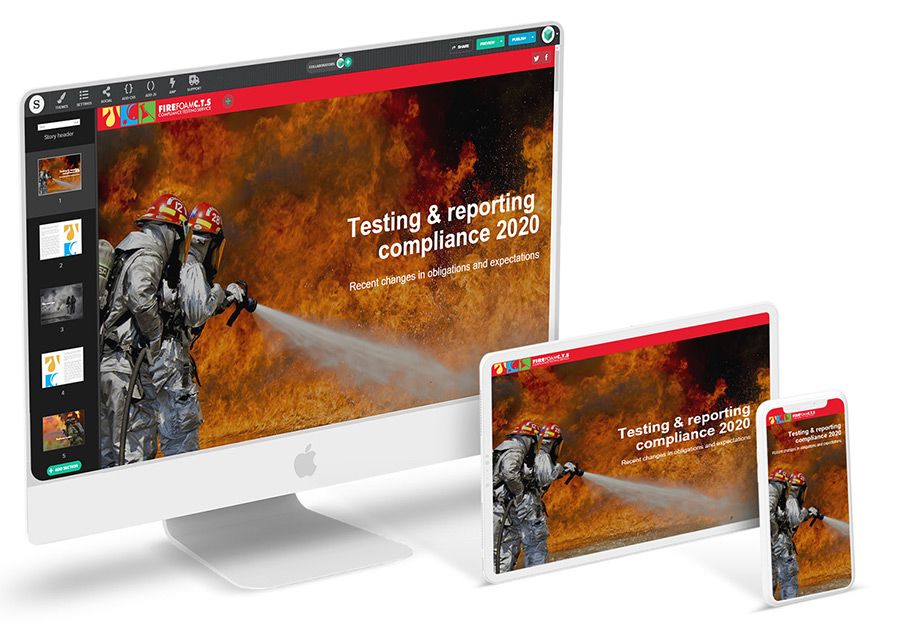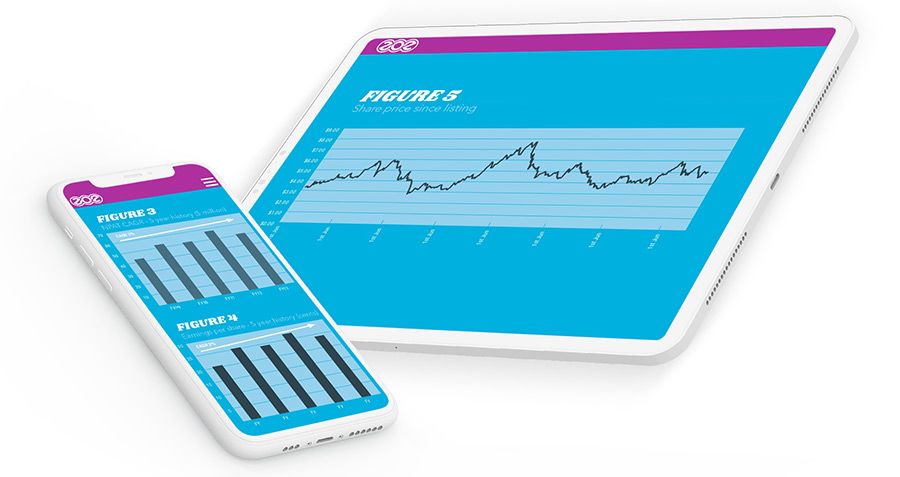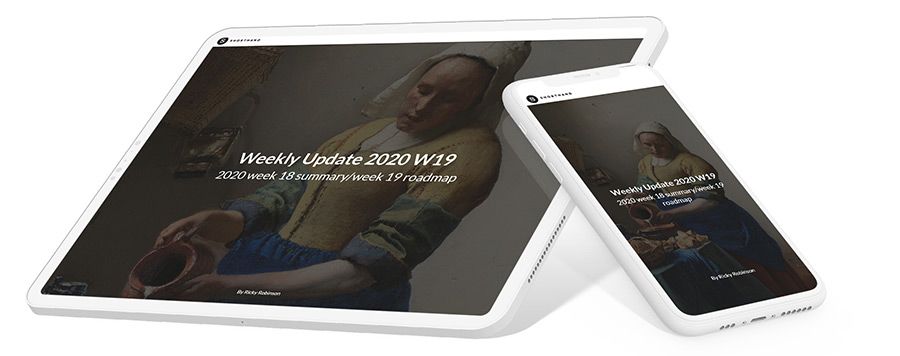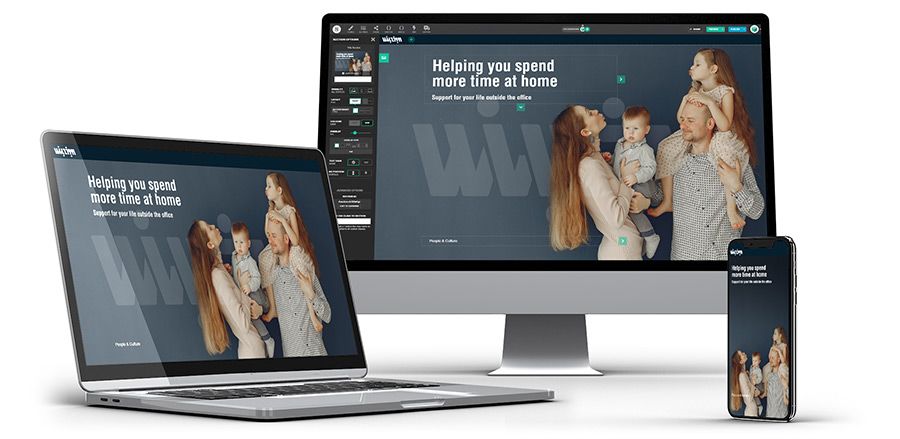How digital storytelling is transforming internal communications

Work is changing. With the help of digital storytelling platforms, internal communications teams are shaping a new world.
Even before COVID-19, the typical work experience for many people was slowly but surely transforming into something new.
Permanent desks were being replaced with hotdesks, staid offices with coworking spaces, and the dreaded commute with the option to work from home.
Some organisations were also starting to offer benefits more typical of startups, including four-day weeks, unlimited holidays, and an end to the classic ‘nine-to-five’ workday.
From the outside, you could be forgiven for thinking that the old rules of work no longer applied.
Culture, communication, and remote work

But this vision of a brave new world of entirely unstructured work is a bit misleading. While many workers now have greater flexibility, organisations face the same challenges and obligations — including legal obligations — as they always did.
At a high level, the communication of strategy — the broader story of why the company exists and what it does — is critical. After all, employees who are engaged with a company’s strategy are, on average, more productive members of the team.
It’s just as important for team members to have reference information on hand, including what their benefits are, what their health and safety policy looks like, who their team members are, what clubs or social activities are offered, how they can make complaints, and, crucially, how the company is performing.
In times of change, internal communicators need to explain what’s happening, and why. These changes may include furloughs, job losses, or staff being restructured into other positions.
Most importantly, effective internal comms can also shape the culture of an organisation. This is particularly true for organisations with remote workers distributed across multiple locations.
There are few tasks more critical in an organisation than internal communications. But with the rise of a flexible and distributed workforce, internal communicators are facing unprecedented challenges.
You can read more about boosting your company's culture in our guide to better internal marketing, along with our roundup of 8 proven internal marketing strategies, or check out 11 tips for improving your internal communications.
Internal communications needs to evolve

Why is this? In any organisation, staff are typically time-poor, with limited ability to pay close attention to anything not immediately relevant to their job. Internal comms competes with a range of other daily tasks — and more often than not finds itself at the bottom of the list.
The problem is not just busyness. Let’s be honest: there’s a bigger problem at hand.
Internal communications can be, well, boring. Boring to look at, boring to read, boring to engage with.
To meet the challenges of our new era, internal communications needs to evolve. But for this evolution to happen, internal communicators are going to need better internal communications tools.
Check-box comms and
magical thinking


Let’s take a closer look at the current state of internal communications.
On the one hand, internal comms are often seen purely as a matter of compliance — that is, as a way of meeting an organisation's basic HR and legal requirements. We can call this ‘check-box comms.’
On the other hand, we find folks applying to internal communications a sort of magical thinking. Too often, people dash off missives on their company's intranet, wiki, or the ill-fated company-wide email. They then make the mistake of assuming, by virtue of their content being published, that something called ‘communication’ has occurred.
This isn’t how it works — not for any type of communication, internal or external. At the end of the day, all content plays by the same rules, whether it's a company policy announcement or a story published by the BBC.
Expectations are rising

Fundamentally, all content needs to be written in plain English, it needs to adopt the right tone, it needs to be visually attractive, and it needs to technically ‘work’ on its medium of distribution (for example, a web browser on a smartphone, a tablet or a desktop computer).
Beyond these basic principles, though, content also needs to meet rising reader expectations. The fact is, the web is changing. The world’s leading brands, non-profits, and media organisations are increasingly publishing stories as interactive and immersive reading experiences.
For example, see 'Brexit by numbers' from Sky News, which uses modern digital storytelling techniques to bring to life some potentially dry datasets on the impact of Brexit.
Media companies invest in stories like this because they have better levels of engagement, fewer bounces, and high click-through-rates.
In other words, these stories are actually being read.
There's no reason why internal communicators can't employ the same techniques — and enjoy the same boost in reader engagement.
Imagine using animated charts to explain complex topics. Or personalising documentation with vivid photography and video. Or employing interactive scrolling, pull-quotes, and rich media to sustain attention on longer pieces.
This can seem like an enormous mountain to climb — internal communicators, after all, don’t generally have teams of developers or web designers on hand to build bespoke web experiences.
But what if developers and web designers were no longer necessary? What if internal communicators could build immersive experiences for their team on their own?
Introducing immersive digital storytelling

For your organisation to thrive, the staff of your company need to be treated with as much care and consideration as the readers of a BBC feature story. That means your content needs to be as engaging as content produced by the world’s leading brands and media organisations.
So, what does an immersive reading experience actually look like?
Let’s start with BBC News in their story 'When council estates were a dream'. BCC use Shorthand’s Reveal feature to animate the remarkable transformation in British housing over the decades.



The United Nations Development Programme use photography, pull quotes, and section breaks to tell their immersive, educational story on marine ecology, 'Wilderness of water'.
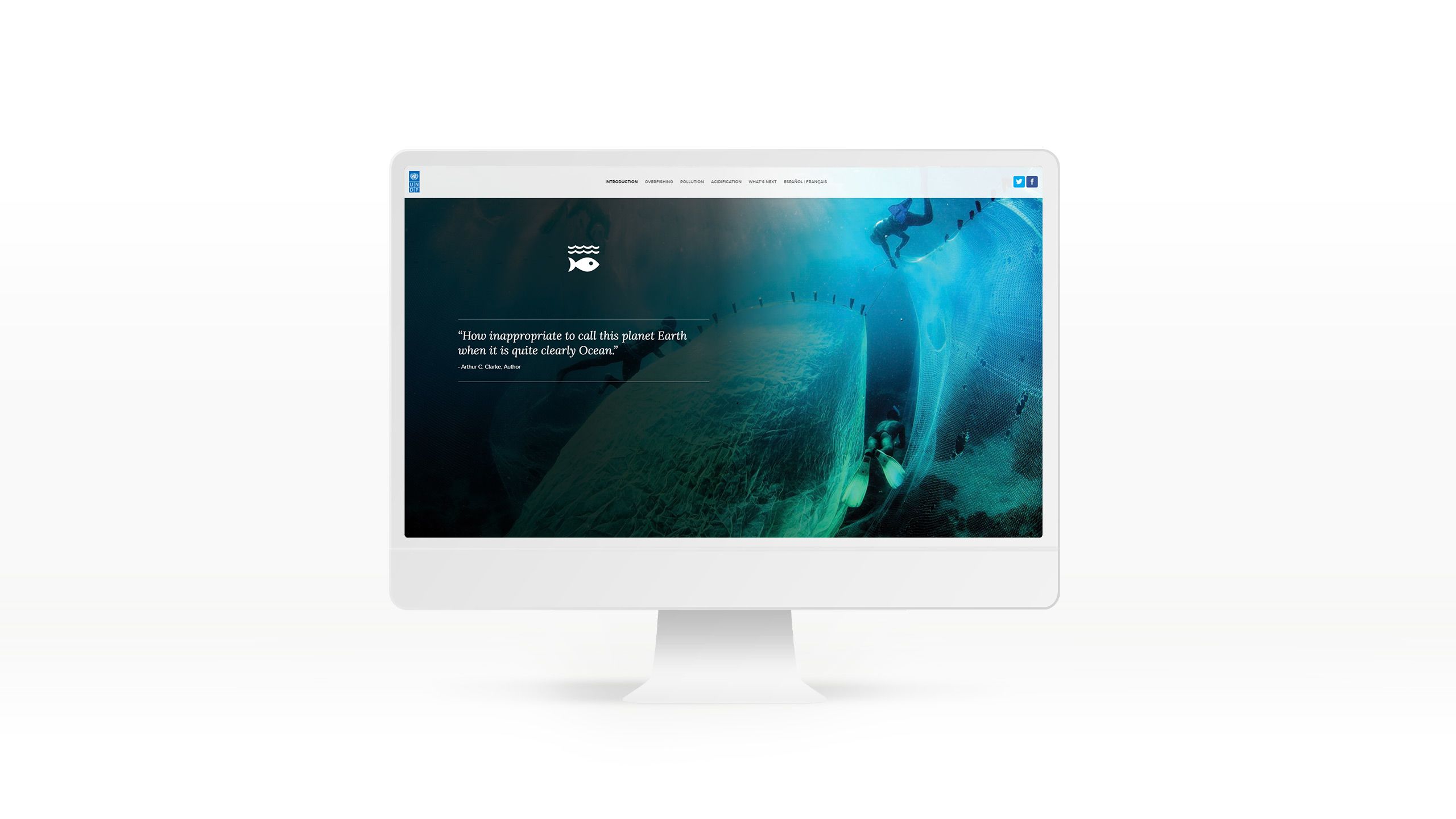
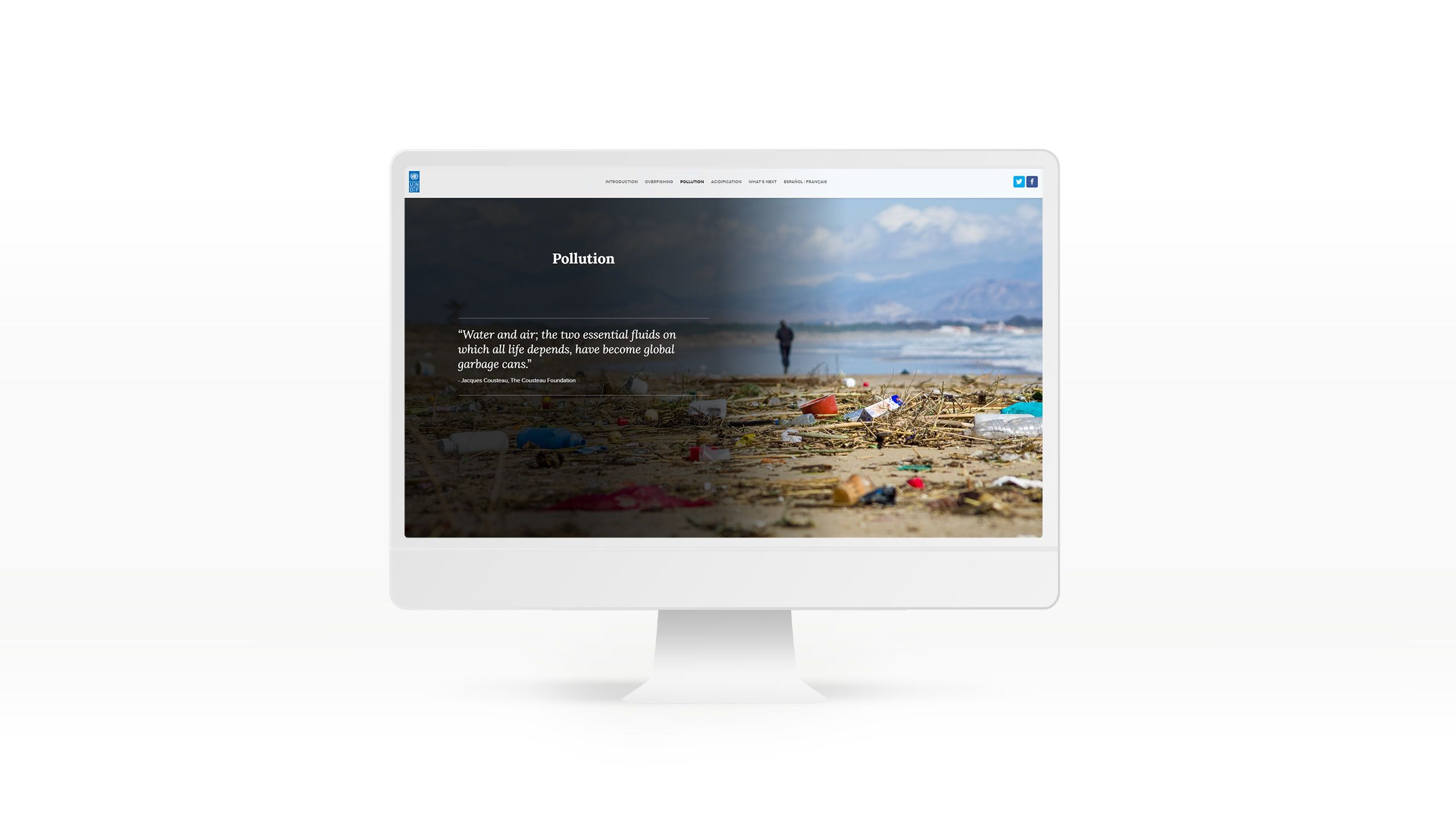
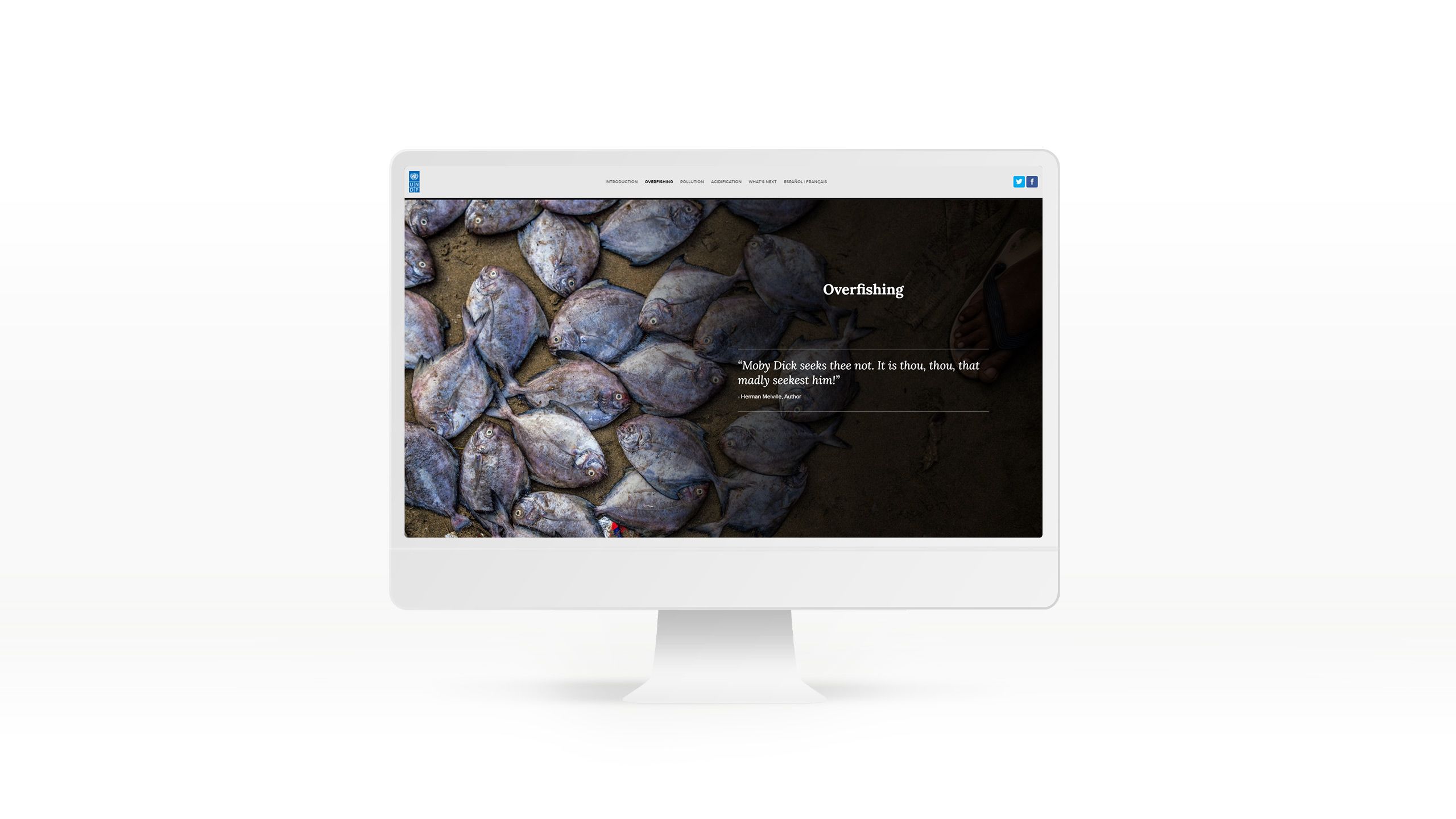
Universities are also producing beautiful immersive reading experiences. For example, see 'Cambridge green', an engaging overview of how the University of Cambridge is reducing its carbon footprint.

Immersive internal communications

As the world of work changes, so too have the challenges faced by internal communicators. With a distributed and flexible workforce, organisations have needed to work harder to build and sustain a cohesive culture, document their technical processes and HR workflows, and communicate company policy.
To meet these challenges, communications teams are adopting the tactics used by the world’s biggest media companies and brands. Immersive digital storytelling is increasingly being used by companies for all forms of internal communication, from weekly updates from the CEO to internal documentation.
In fact, this is what we’re doing at Shorthand.
With new storytelling tools like Shorthand, it’s become possible to create beautiful, immersive reading experiences without needing a developer.
And with Shorthand’s Inside Edition, teams can publish directly to their intranet with one click. Access is secured using your existing enterprise authentication systems, with support for single sign-on (SSO) with a growing range of services, including Google, Okta, Auth0, Microsoft Azure Active Directory, Centrify, and GitHub.
Publish your first story, or get in touch for a demo.

